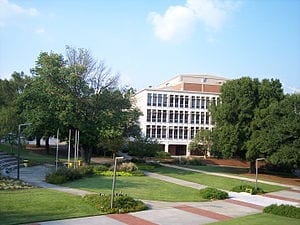
There’s more to it than geography and corporate culture
After decades of bafflement and frustration, the world is still struggling to guess the secret of Silicon Valley’s success. Sure, the towns and cities at the San Francisco Bay’s southern end have plenty of high-tech talent, but that’s scarcely an explanation: those ambitious young engineers and innovators could find work just about anywhere they choose.
You can list the features that brought so many of them to the valley, but the riddle remains. Yes, the surrounding area has its share of universities, government research centers and commercial labs. And a start-up could hardly ask for more encouraging circumstances: a large pool of highly educated workers; access to plentiful venture capital; and a highly entrepreneurial, risk-taking culture.
But Silicon Valley has no monopoly on any of those features. To be sure, pockets of innovation have emerged on a smaller scale elsewhere in the U.S., like North Carolina’s Research Triangle and the Route 128 Corridor outside Boston. All the same, comparable advantages have been of little help to areas such as northern New Jersey, with the legendary Bell Labs and leading universities, along with proximity to Wall Street, the world capital of high-stakes investment.
Countries around the world are doing their best to copy the valley’s magic. Take China, where companies in a variety of industries have boosted their research and development spending by an average of 64 percent every year for the past five years, and the Beijing government is making huge investments in the country’s university system. The hope is that such an infusion of resources will generate a Silicon Valley–style symbiosis between industry and the research sector. The effort has been massive, but so far the results are anything but.
What are the valley’s emulators missing? As authors of The Culture of Innovation: What Makes San Francisco Bay Area Companies Different?, a 2012 joint study by the Bay Area Council Economic Institute and Booz & Co., we attempted to answer that question. What we found was a special trait that distinguishes Silicon Valley’s firms from ordinary companies: the ability to integrate their innovation strategies with their business strategies.
That one trait can make the difference between success and mediocrity—or worse. Our survey reported that Silicon Valley firms are almost four times as likely as the average U.S. company on Booz & Co.’s annual Global Innovation 1000 study to have a tight alignment of their overall corporate strategy with their innovation strategy. Not coincidentally, the corporate culture of a Silicon Valley firm is also two and a half times more likely to be attuned to the company’s innovation strategy.
Coordination like that can pay big dividends. According to the Global Innovation 1000 study, companies that successfully mesh their innovation strategies with their corporate aims grow far more vigorously than those that don’t, both in profitability and in net worth. And to underscore the importance of innovation, Silicon Valley companies are four times as likely as others to shake up their own status quo by hiring new product-development talent.
The Latest on: Silicon Valley
[google_news title=”” keyword=”Silicon Valley” num_posts=”10″ blurb_length=”0″ show_thumb=”left”]
via Google News
The Latest on: Silicon Valley
- 50 displaced Maui cats flown to Silicon Valley due to capacity challengeson April 27, 2024 at 4:34 pm
Maui Humane Society takes 50 cats to Silicon Valley in an effort to relieve some of the capacity challenges that the organization has faced since the August 8, 2023 wildfires.
- Trump Turns on R.F.K. Jr. Amid Concerns He Could Attract Republican Voterson April 27, 2024 at 12:27 pm
The former president called Robert F. Kennedy Jr. a ‘Democrat plant’ and attacked his running mate, Nicole Shanahan, who gave $2 million to the Kennedy campaign.
- How Bangalore became the Silicon Valley of Indiaon April 27, 2024 at 12:00 pm
Sitting under the ceiling fans in Koshy’s Restaurant, a fixture in this city since 1952, it felt as though nothing had changed. White-uniformed waiters with silver buttons on their tunics attended to ...
- Silicon Valley’s business model is incompatible with the moderation of online horror and hatredon April 27, 2024 at 7:00 am
Managing the barrage of upsetting material online is a challenge that service providers are struggling to meet, even if they try ...
- Move over Silicon Valley, Aaron Sorkin planning 'The Social Network' sequel on January 6 Insurrectionon April 26, 2024 at 5:54 pm
The famed scriptwriter revealed the news on Friday on "The Town" podcast.Renowned screenwriter Aaron Sorkin is embarking on a new cinematic endeavor that promises to delve deep into the tumultuous ...
- Tempers flare over Silicon Valley school district mapon April 26, 2024 at 5:07 pm
A recent Silicon Valley school board meeting erupted into yelling, chanting and an arrest over changes to trustee elections.
- 3 Silicon Valley Stocks Set to Soar With Massive Buybacks in 2024on April 26, 2024 at 4:30 am
InvestorPlace - Stock Market News, Stock Advice & Trading Tips Silicon Valley stocks with buybacks are getting a lot of attention from ...
- India’s Silicon Valley Heads to Polls Amid Searing Heat and Water Shortageson April 25, 2024 at 5:00 pm
Many voters stayed home as polling got underway in India’s tech hub of Bengaluru, as searing heat and a water shortage continued to weigh on the city and the ruling and opposition parties sparred over ...
- A Bevy of Buyers: $1.7M Tiny House in Silicon Valley Snags a Stack of Offerson April 25, 2024 at 12:35 pm
The post A Bevy of Buyers: $1.7M Tiny House in Silicon Valley Snags a Stack of Offers appeared first on Real Estate News & Insights | realtor.com®.
- TikTok Ban Helps Silicon Valley And National Security Hawks — Not Userson April 25, 2024 at 9:57 am
The Senate voted 79-18 on Tuesday to pass legislation that could—depending on what happens over the next year—result in an effective TikTok ban in the United States. President Biden signed the bill ...
via Bing News










